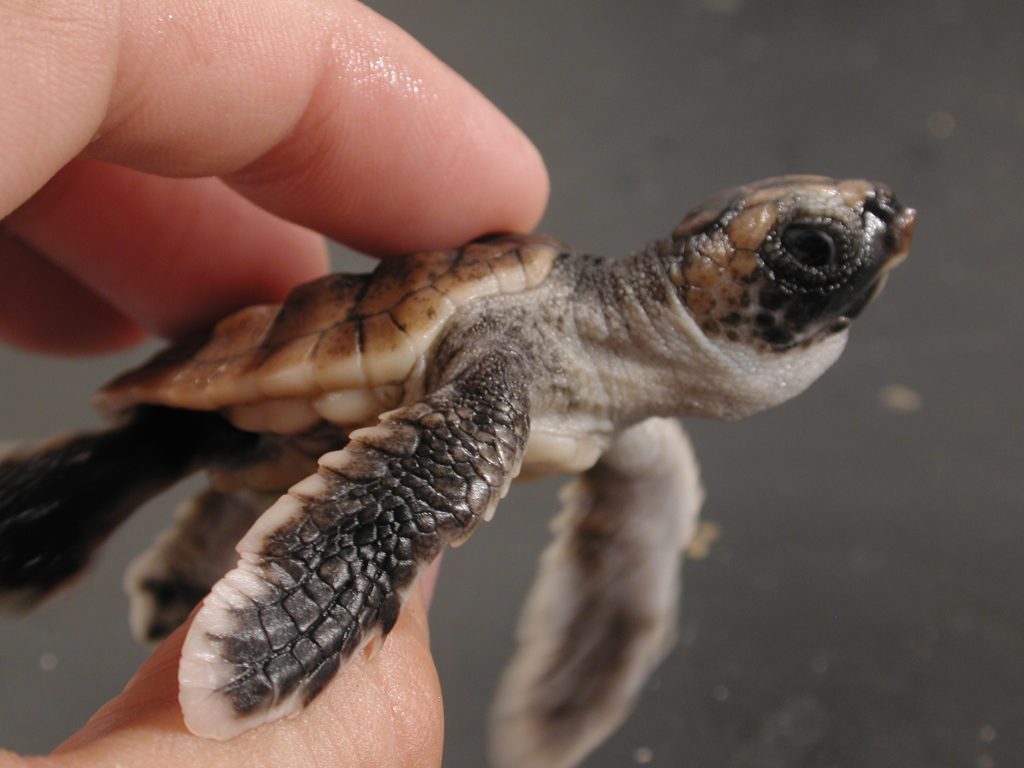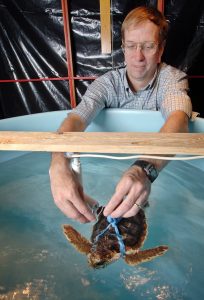
Successful sea turtle nesting requires a combination of environmental features like soft sand, the right temperature, few predators and an easily accessible beach.
Adult sea turtles find their way back to the beaches where they hatched by seeking out unique magnetic signatures along the coast, according to new evidence from UNC biologists.
“Sea turtles migrate across thousands of miles of ocean before returning to nest on the same stretch of coastline where they hatched, but how they do this has mystified scientists for more than 50 years,” said J. Roger Brothers, a graduate student in biology. “Our results provide evidence that turtles imprint on the unique magnetic field of their natal beach as hatchlings and then use this information to return as adults.”
While earlier studies have shown that sea turtles use the Earth’s magnetic field as a guide while out at sea, it has remained unclear whether adult turtles also depend on magnetic features to recognize and return to the nesting sites chosen by their mothers before them, the researchers explain.
Several years ago, biology professor Kenneth Lohmann, who is co-author of the new study, proposed that animals including sea turtles and salmon might imprint on magnetic fields early in life, but that idea has proven difficult to test in the open ocean. In the new study, Brothers and Lohmann took a different approach by studying changes in the behavior of nesting turtles over time.

The researchers analyzed a 19-year database of loggerhead nesting along the eastern coast of Florida, the largest sea turtle rookery in North America. They found a strong association between the spatial distribution of turtle nests and subtle shifts in the Earth’s magnetic field.
In some times and places, the Earth’s field shifted so that the magnetic signatures of adjacent locations along the beach moved closer together. When that happened, nesting turtles packed themselves in along a shorter stretch of coastline, just as the researchers had predicted. In places where magnetic signatures diverged, sea turtles spread out and laid their eggs in nests that were fewer and farther between.
Sea turtles likely go to great lengths to find the places where they began life because successful nesting requires a combination of environmental features that are rare: soft sand, the right temperature, few predators and an easily accessible beach.
Published in the Spring 2015 issue | Research, The Scoop
Read More

Pérez quoted on U.S./Cuba relations
UNC historian Louis Pérez contributed to the global discussion on…

Mapmaking Pioneer: Sandy McNally ’63 served as head of iconic business that helped Americans hit the highways
Alumnus Andrew “Sandy” McNally IV served as CEO, president and…


